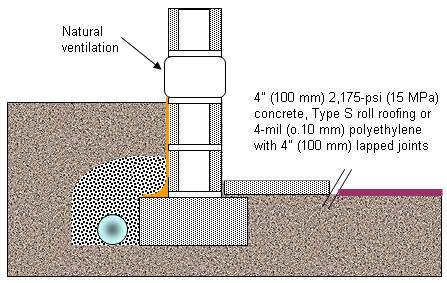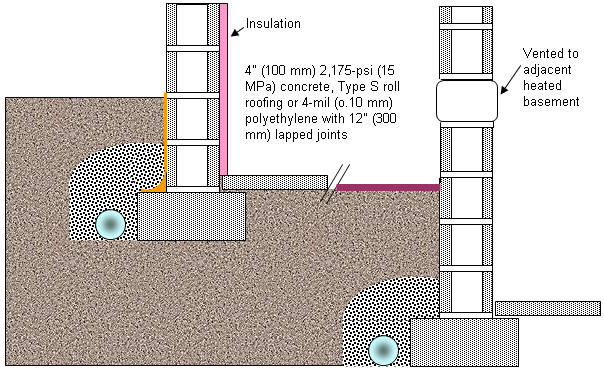Concrete Foundation Walls - Water Leakage
Problem: Humid, damp, or, musty basement or crawl space - 2.
Cause: Moisture in crawl spaces.
Exposed soils can be a significant source of moisture in homes with crawl spaces. Without moisture protection and suitable ventilation, crawl spaces are likely to be damp, humid, and unhealthy areas.
Solutions: Install a moisture barrier and suitable ventilation.
- Cover soil in unheated crawl spaces with either 4 inch (100mm of 2,175-psi (15-MPa) concrete, Type S roll roofing or 4-mil (0.10-mm) polyethylene. Joints in sheet materials should be lapped a minimum of 4 inches (100 mm), and should be weighted down with sand or another suitable ballast material.
- Natural ventilation should be supplied for unheated crawl spaces during the summer and fall by a vent area of not less than 1 sq. ft. / 500 sq. ft. of floor area, evenly distributed on opposite sides of the crawl space to promote cross ventilation. Vents shall be screened to prevent the entry of snow, rain, and insects as shown in Figure 31.

Figure 31 - Reducing Moisture In Crawl Spaces
- Insulate and vent heated crawl spaces to the adjacent basement space. Ground cover in heated crawl spaces must be not less than 6-mil (0.15 mm) polyethylene, lapped a minimum of 12 inches (300 mm), and either weighted down with sand or covered with a concrete skim coat of not less than 2 inches (50 mm) as shown in Figure 32.

